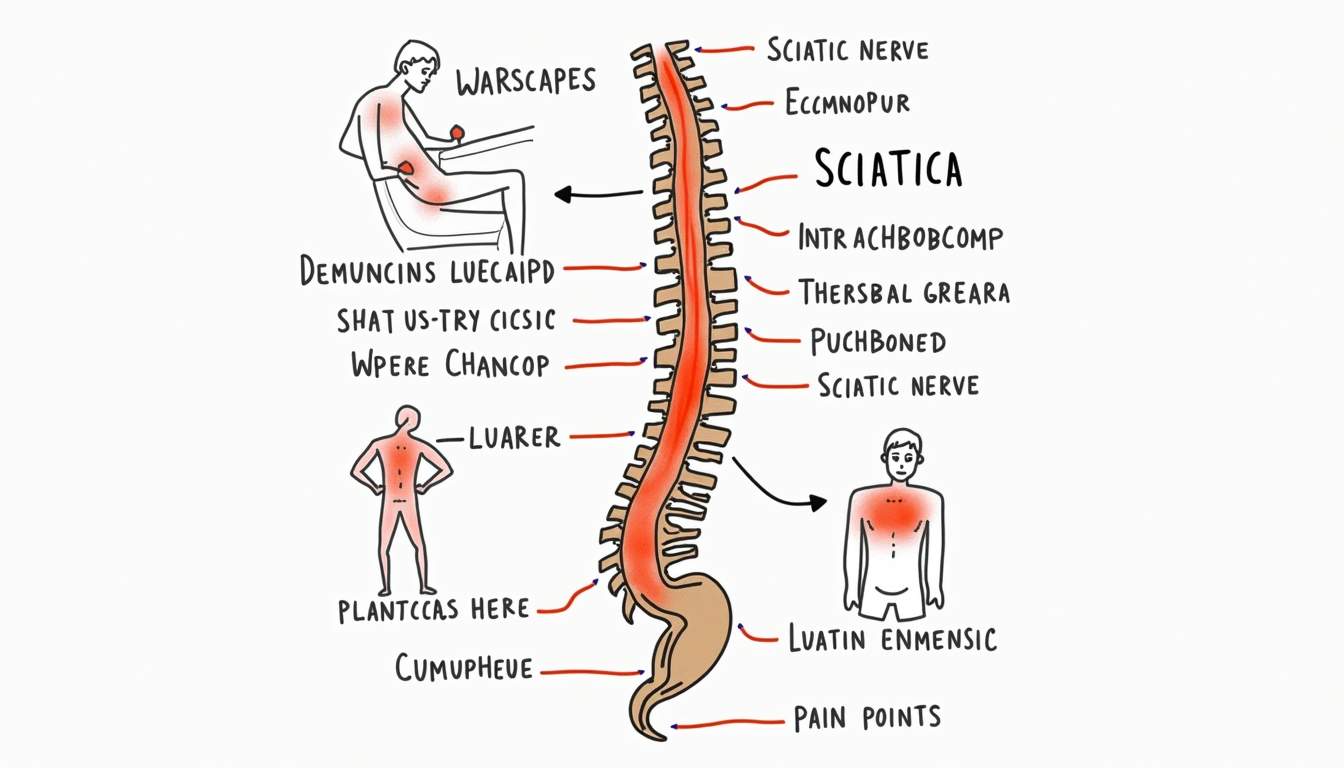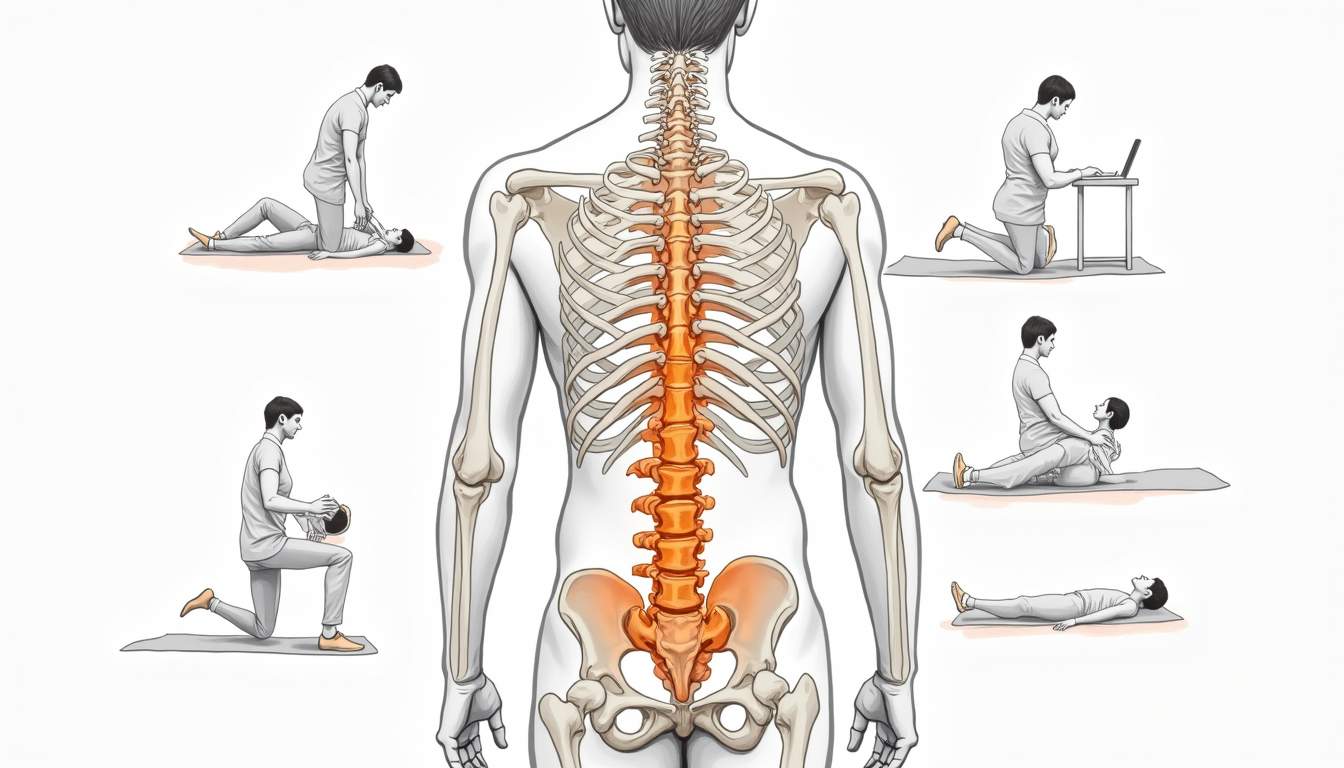Will Physiotherapy Help Sciatica: A Comprehensive Guide
- Published on
- Kurt Johnson
Trustindex verifies that the original source of the review is Google. came here for two injuries (first time through BUPA), second time I paid myself to get a quick diagnose and rehab exercises of knee injury after London triathlon middle distance. Six weeks later I did IM70.3 Belgium pain free and smashed it. Update: I keep coming back if and when a niggle occurs. I feel that if you do this early enough you prevent a full-blown injury with big setback.Trustindex verifies that the original source of the review is Google. Update (2024) - stopped going to One Body after a ridiculous amount of admin problems. Hope they have sorted themselves out. Not a reflection on Bethany. I had lingering issues with a frozen shoulder. Saw Bethany and she was absolutely brilliant. Sussed the problem quickly, communicated clearly about the course of action she'd recommend, pinpointed the problem area during our session and also gave me exercises to do at home. Currently mid treatment and confident I'm on the road to recovery. More range of movement restored after one session with her than 3 sessions with my last physio. Glad I made the change.Trustindex verifies that the original source of the review is Google. Miss Wrobel has been very attentive in my rehab and provide great treatment plan for my recovery.Trustindex verifies that the original source of the review is Google. I had an initial taster that work paid for with Gabriel at Farringdon one body ldn. It was one of the best experiences with a physio I’ve ever had (I’ve been to many). I then went on to book multiple sessions with him for a shoulder injury and I must say his massage work coupled with his knowledge of exercises and anatomy makes him the BEST physio I have ever worked with. He was worth every penny and I’d recommend him to anyone. Gabriel at one body ldn is a top top physio and they are lucky to have him!Trustindex verifies that the original source of the review is Google. Eli has provided a knowledgeable, professional and expert physiotherapy and sports massage service for my back pain within a clean and welcoming environment. I am always seen on time and initially had a thorough history taken before treatment started. I cannot recommend Eli highly enough.Trustindex verifies that the original source of the review is Google. I have been going to One Body London Bridge now for a few months and very impressed by the service. Physiotherapy treatment is fantastic with immediate pain relief and a well thought out program to help keep the pain away. The space is clean, modern and well equipped. I also have loved the flexibility to book in at other locations as well, their Farringdon location is also fantastic. The team is extremely professional and their booking system is very easy to use which is very convenient. Highly recommend One Body.Trustindex verifies that the original source of the review is Google. Incredibly impressed by Rebecca. Great bedside manner, great knowledge, and a more holistic view than I've experienced from physics. Highly recommend!Trustindex verifies that the original source of the review is Google. Load more
Award-Winning Sciatica Physiotherapy Near You

Sciatica is a condition that affects many individuals, often leading to persistent pain and discomfort. For those struggling with this ailment, understanding the potential benefits of sciatic nerve physiotherapy can be crucial in managing their symptoms and improving their overall quality of life. This comprehensive guide will delve into the causes, symptoms, and treatment options for sciatica, focusing specifically on the role of physiotherapy.
Understanding Sciatica: Causes and Symptoms
Sciatica is characterized by pain that radiates along the path of the sciatic nerve, which extends from the lower back through the hips and down each leg. It is often caused by compression of the nerve, leading to discomfort and mobility issues. Identifying the underlying causes and symptoms is essential for effective treatment.

The Science Behind Sciatica
The most common cause of sciatica is a herniated disc, which can compress the sciatic nerve roots. Other factors contributing to this condition include spinal stenosis, degenerative disc disease, and injuries. Understanding the anatomy involved helps explain why certain movements or positions can exacerbate the pain. The sciatic nerve is the largest nerve in the body, and its intricate network means that issues in the lower back can have far-reaching effects, impacting not just the legs but also the overall quality of life. Additionally, lifestyle factors such as obesity, sedentary behavior, and improper lifting techniques can increase the risk of developing sciatica, highlighting the importance of maintaining a healthy lifestyle.
Common Symptoms of Sciatica
Symptoms of sciatica can vary widely but often include:
- Pain that radiates from the lower back down to one leg
- Numbness or tingling in the affected leg
- Weakness in the leg
- Pain that worsens with prolonged sitting or standing
Recognizing these symptoms early on can facilitate timely intervention and management strategies. In addition to these common symptoms, some individuals may experience a sharp, burning sensation or a dull ache that can make it difficult to perform everyday activities. The intensity of the pain can fluctuate, sometimes feeling mild and manageable, while at other times it can be debilitating. Furthermore, sciatica may also lead to complications such as chronic pain or mobility issues if left untreated, emphasizing the need for awareness and proactive care.
The Role of Physiotherapy in Treating Sciatica
Physiotherapy is a non-invasive approach to treating sciatica that emphasizes the importance of movement and improving physical function. This treatment modality is tailored to each individual’s needs, making it a versatile option for those experiencing sciatic pain. By focusing on personalized care, physiotherapists can help patients navigate their unique challenges and develop strategies that promote long-term recovery.

The Principles of Physiotherapy
The primary aim of physiotherapy is to restore mobility and promote healing. Physiotherapists utilize a combination of hands-on techniques and therapeutic exercises to address pain and enhance the body’s functionality. This holistic approach not only targets the symptoms but also seeks to address the underlying causes of sciatica. Furthermore, physiotherapy often includes education on body mechanics and ergonomics, empowering patients to make informed choices about their daily activities and posture, which can significantly reduce the risk of future flare-ups.
How Physiotherapy Targets Sciatica
Physiotherapy for sciatica focuses on:
- Reducing pain through manual therapy and modalities such as heat and ice.
- Strengthening core and back muscles to provide better support to the spine.
- Improving flexibility and range of motion, particularly in the hips and lower back.
Through these targeted interventions, physiotherapy aims to alleviate symptoms and help patients regain full function. In addition to these techniques, physiotherapists may also incorporate specialized modalities such as electrical stimulation and ultrasound therapy to further enhance pain relief and tissue healing. These advanced methods can complement traditional exercises, providing a comprehensive approach to managing sciatica.
Moreover, the psychological aspect of dealing with chronic pain is often overlooked. Physiotherapy can also play a crucial role in addressing the emotional and mental health challenges that accompany sciatica. By fostering a supportive environment and encouraging open communication, physiotherapists can help patients build resilience and confidence in their ability to manage pain, ultimately leading to improved outcomes and a better quality of life.
Benefits of Physiotherapy for Sciatica
Physiotherapy offers numerous benefits for individuals suffering from sciatica, making it a popular choice for treatment. The advantages extend beyond just pain relief, impacting overall health and wellbeing.
Pain Management and Reduction
One of the most significant benefits of physiotherapy is its effectiveness in managing pain. Through techniques such as spinal mobilization, manipulation, and therapeutic exercises, physiotherapists can help reduce the intensity and frequency of sciatic pain. These methods not only alleviate discomfort but also address the underlying causes of pain, promoting long-term healing. Additionally, physiotherapists may incorporate modalities such as ultrasound therapy or electrical stimulation, which can further enhance pain relief and accelerate the recovery process.
Improved Mobility and Flexibility
In addition to pain relief, physiotherapy plays a vital role in improving mobility. Patients often experience increased flexibility in their back and legs, allowing for a better quality of movement in daily activities. This improvement can lead to greater independence and better overall quality of life. Furthermore, physiotherapists tailor exercise programs to the individual needs of each patient, ensuring that they not only regain their previous range of motion but also strengthen the muscles that support the spine. This personalized approach helps to prevent future episodes of sciatica, empowering patients to engage in physical activities they may have previously avoided due to pain.

Education and Self-Management
Another key benefit of physiotherapy is the education patients receive about their condition. Understanding the mechanics of sciatica and the factors that contribute to it can empower individuals to take control of their health. Physiotherapists provide valuable insights into posture, body mechanics, and ergonomics, which can help patients make informed choices in their daily routines. This knowledge fosters a proactive approach to self-management, enabling individuals to implement strategies that reduce the risk of recurrence and promote overall spinal health.
Holistic Approach to Healing
Physiotherapy also emphasizes a holistic approach to healing, addressing not just the physical symptoms of sciatica but also the emotional and psychological aspects. Chronic pain can lead to feelings of frustration, anxiety, and depression, which can further exacerbate the condition. By incorporating relaxation techniques, mindfulness practices, and stress management strategies into treatment plans, physiotherapists help patients cultivate a more balanced state of mind. This comprehensive care model not only aids in physical recovery but also supports emotional resilience, enhancing the overall therapeutic experience.
Voted by 1000's as the best sciatica treatment in London
From fixing your sciatic neuropathy to piriformis syndrome rehabilitation; we’ve got you covered.
Get a precise diagnosis, treatment plan, and expert sessions for instant pain relief.
Different Physiotherapy Techniques for Sciatica
Several physiotherapy techniques have shown effectiveness in treating sciatica. The choice of techniques depends on the individual’s specific condition and preferences.

Manual Therapy Techniques
Manual therapy involves hands-on techniques to manipulate and mobilize the spine and joints. This approach can relieve pressure on the sciatic nerve and alleviate pain. Techniques such as stretching and joint mobilization can greatly enhance mobility and reduce discomfort. Additionally, manual therapy can help improve blood circulation in the affected areas, promoting faster healing and recovery. Physiotherapists may also incorporate myofascial release techniques, which target the fascia surrounding muscles, to further relieve tension and improve overall function.
Exercise Therapy for Sciatica
Exercise therapy is another cornerstone of physiotherapy. A physiotherapist will often design an individualized exercise program that may include:
- Stretching exercises to improve flexibility
- Strengthening exercises to support the spine
- Core stabilization exercises to enhance balance and coordination
Regular participation in these exercises promotes healing and helps prevent future episodes of sciatica. Furthermore, engaging in low-impact aerobic activities, such as walking or swimming, can improve cardiovascular health while being gentle on the back. It’s essential for patients to maintain a consistent routine, as this not only aids in recovery but also builds resilience against potential flare-ups. A physiotherapist may also educate patients on proper body mechanics and posture during daily activities, which can significantly reduce the risk of aggravating the sciatic nerve.
What to Expect During Your Physiotherapy Sessions
When embarking on physiotherapy for sciatica, it’s important to know what to expect during your sessions. Understanding the steps involved will help ease any anxiety about the treatment process.
Initial Assessment and Diagnosis
Your first appointment will typically involve an initial assessment, where the physiotherapist will evaluate your medical history, lifestyle, and specific symptoms. This assessment is crucial for developing an effective treatment plan tailored to your needs. The physiotherapist may also perform physical tests to assess your range of motion, strength, and reflexes, which can provide valuable insights into the underlying causes of your sciatica. This thorough evaluation ensures that no aspect of your condition is overlooked, allowing for a more targeted approach to your treatment.
Developing a Treatment Plan
Following the assessment, the physiotherapist will collaborate with you to design a comprehensive treatment plan. This plan may include a combination of manual therapy, exercise programs, and education on posture and body mechanics to prevent future problems. Additionally, your physiotherapist might introduce modalities such as ultrasound or electrical stimulation to help reduce pain and inflammation. These techniques can enhance the effectiveness of your rehabilitation and promote faster recovery. It’s also common for physiotherapists to provide you with home exercises that reinforce what you learn during your sessions, ensuring that you remain engaged in your recovery journey even outside the clinic.
Throughout your treatment, regular progress evaluations will be conducted to assess how well you are responding to the interventions. This ongoing assessment allows the physiotherapist to make necessary adjustments to your treatment plan, ensuring that you are always on the most effective path to recovery. As you progress, you may find that your sessions evolve, incorporating more advanced exercises aimed at strengthening your back and core, which are crucial for long-term relief from sciatica symptoms. This dynamic approach not only helps in alleviating pain but also empowers you with the knowledge and skills to manage your condition independently in the future.
Start Your Journey to Relief with One Body LDN
If you’re struggling with sciatica and seeking a path to recovery, One Body LDN is here to help. Our award-winning team of physio experts specializes in combining exercise rehabilitation with deep tissue massage to effectively address your sciatic pain and sports injuries. We pride ourselves on providing personalized care that is tailored to meet your individual needs. Take the first step towards feeling your best and Book an appointment with a sciatica treatment specialist today to get back to your optimal health.

(Disclaimer: The information in this post is for educational purposes only and does not replace personalised medical advice. Always consult a qualified professional for specific guidance on diagnosis and treatment.)






